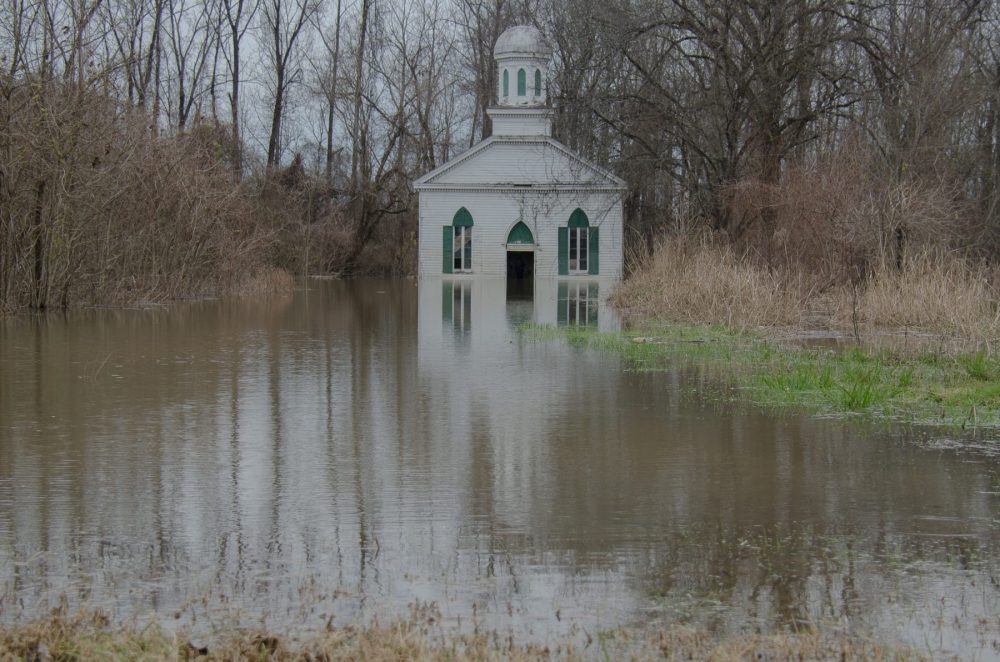January 2016: For my wife’s birthday, her mom, friend and I went to New Orleans and Mississippi on a 4-day weekend trip. We started the trip in New Orleans and rented a car and drove up the length of Mississippi visiting plantation mansions, old dusty Delta towns, the abandoned capitol from the civil war era and juke joints, old wooden shacks where some of the best barbecue and blues music can be found. This was our itinerary.
New Orleans
We started out in the lively city of New Orleans, one of my favorite American cities because of its old French/Cajun culture and unique history mixed in with voodoo and bayous. The price was too high in the French Quarter and instead we booked an air bnb in the 9th Ward, an impoverished part of New Orleans that was hit hard by Hurricane Katrina leaving many of the homes still shuttered. I figured staying in the 9th ward that was predominately black would give us a way to spread some money to other parts of the city and allow us to see a new area. I found the stay to be adventurous but not everyone in my group did. Our air bnb was full of doll heads, which was kind of creepy, but it turned out that our host is a hir stylist and uses them for practice. The neighborhood had a lot of boarded up old houses still unrestored since the hurricane. was crime ridden and we definitely were out of place. We shared a porch with a neighboring unit and a prostitute worked from the other side of the porch and pimps or customers could be heard going back and forth at night. Despite Our air bnb indicated there were no pets, since my mother-in-law is allergic to dogs and cats, In the morning we awoke to see a cat inside the unit, and we were covered in fleas. The cat entered a via a small flap in the door and then ran back outside. When I later asked the host about this, she said she wasn’t misleading us and that the cat is an outdoor cat but just likes to come and go via the little flap. She offered us some free shampoo for our troubles.

9th Ward Home Still Shuttered from the Damage of Hurricane Katrina
In addition to exploring New Orleans, we also stopped at one of the bayou swamp tours and went out on a scenic boat trip with a Cajun guide to see alligators and other wildlife that live in the bayou at Honey Island Swamp. Our Cajun guide was very charismatic and a great storyteller. In addition to wildlife, it was interesting to see some of the Cajun houses in the swamp only accessible by boat and some with confederate flags proudly displayed.

Bayou Alligator

Bayou racoons

Paula holding a baby alligator
Exploring Old Missisippi-Ghost Town of Rodney and Juke Joints
I really wanted to visit one of the lesser traveled states in the USA-Mississippi. I wanted to have a better understanding of the state so well known for its racial segregation, Jim Crow laws and Klu Klux Clan. Besides all of this, it is one of the homes of Blues music, and has some beautiful fading small towns that are endangered elsewhere in America. What I love about Mississippi has many of the small towns that still harken back the days of small-town America. The old, faded mom and pop markets, churches and wooden homes. many of the towns barely have anyone still living there and appear to be ghost towns like Rodney, Mississippi, which was an important town in the 1800s before the Mississippi River changed course leaving the town two miles away and dooming the town to obscurity. Although there are a few residents in town, the majority of buildings including a few old churches are abandoned and prone to flooding from the low-lying flood plains of the Mississippi. Finding the town is not easy too and there is a rough, muddy dirt road to get there. When I was there, we parked the car and explored on foot. Most of the town was flooded so we were unable to visit some of the churches, but we did get to one that we could enter and an old graveyard with tombstones from the 1800s that is accessible by a foot trail. We had to skirt the water by walking along the grass of what appeared to be ana abandoned houses but wasn’t. An elderly lady appeared with a rifle yelling something at us and we briskly curtailed it out of there heeding her warning. Although, we didnt see any other visitors while we were there, I imagine the remaining residents are used to seeing curious visitors and are probably annoyed with them by now especially since they receibe zero financial benfot from them.

Rodney under water

Rodney old church with a cannonball still lodged in the front facade from a civil war northern gunship

Rodney church underwater

Rodney old graves

Paula looking at the Rodney old graves

Rodney old graves

Old Plantation home where Mark Twain is known to have visited as a guest that burnt down from a cigar in a party
Continuing on the backroads, we encountered so many small towns with old, abandoned buildings. It was fun to just slowly drive through them and imagine what life in these little towns must have been like.

Small town Mississippi

Small town Mississippi
I badly wanted to visit a juke joint after watching an Anthony Bourdain episode. In the slavery days, juke joints were really just small sheds or gathering places where slaves could meet and unwind and play music to forget about their suffering for a little while. The music evolved into the blues and blues became rock n roll. Only a handful of these juke joints remain, and they still are unofficial gathering places for blues music, barbecue and dancing. They aren’t restaurants and customer service are non-existent. Cash only and beers are stored in a cooler because most of these places are pretty run down and do not have much for amenities. The toilets are usually pretty foul too. We arrived in the afternoon at this one called Red’s in Clarksville in the northern Delta and there was already some pretty lively blues music being played. No photo or videos are allowed, and I didn’t want to offend anyone. Paula and her mom who invited to dance by one of the local intoxicated patrons and I sat back enamored by the blues show drinking pecan brewed beers made locally in Mississippi. Most of the blues artists are from the local area and they just come to play and unwind.

Red’s Juke Joint
We stayed the night in a restored sharecropper’s cabin that was once where freed slaves lived when they helped pick cotton for a share of the profits. The cabins kept their original rustic appearance but with some improved amenities.

Our cabin for the night
For Paula’s birthday we stayed in one of the nice plantation era mansions. The house, room and grounds were enchanting, but it was important to remember that despite the beauty all of it was built on the backs of slaves.

Monmouth Plantation in Natchez, Mississippi

Our Room in Monmouth Plantation

Dining at Monmouth Plantation

